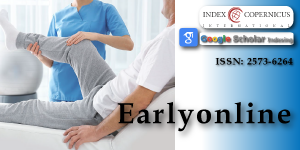Neuroplasticity-based Physiotherapy Approaches in Stroke Rehabilitation: A Systematic Review
Main Article Content
Abstract
Background: Stroke is a leading cause of adult disability worldwide, with motor impairments being the most common sequelae. Neuroplasticity—the brain’s capacity to reorganize neural networks—underpins functional recovery and is enhanced by specific physiotherapy interventions.
Objective: This systematic review aimed to evaluate the effectiveness of neuroplasticity-based physiotherapy approaches in improving motor recovery and functional independence among stroke survivors.
Methods: A comprehensive search was conducted across PubMed, Scopus, PEDro, and Web of Science for randomized controlled trials (RCTs) published between January 2010 and August 2025. Eligible studies included adult stroke patients undergoing neuroplasticity-based physiotherapy interventions such as constraint-induced movement therapy (CIMT), mirror therapy, task-specific training, robotic-assisted therapy, and virtual reality. Two reviewers independently screened studies, extracted data, and assessed methodological quality using the PEDro scale. PRISMA guidelines were followed.
Results: Twenty-three RCTs (n = 1,465 participants) met the inclusion criteria. CIMT and task-specific training consistently demonstrated significant improvements in upper limb motor function and activities of daily living (ADL). Mirror therapy showed moderate evidence for upper limb recovery, particularly in subacute stroke. Robotic-assisted therapy and virtual reality yielded positive but heterogeneous results. Risk of bias was moderate due to small sample sizes and lack of blinding.
Conclusion: Neuroplasticity-based physiotherapy approaches are effective in enhancing motor recovery after stroke, especially CIMT and task-specific training. Larger, multicenter RCTs with standardized protocols are recommended.
Article Details
Copyright (c) 2025 Bhaskare G.

This work is licensed under a Creative Commons Attribution 4.0 International License.
1. Feigin VL, Nguyen G, Cercy K. Global stroke statistics 2022: Incidence, prevalence, mortality, and disability. Lancet Neurol. 2022;21(10):913–924.
2. Kleim JA, Jones TA. Principles of experience-dependent neural plasticity: Implications for rehabilitation after brain damage. J Speech Lang Hear Res. 2008;51(1):S225–S239. Available from: https://doi.org/10.1044/1092-4388(2008/018)
3. Pollock A, Baer G, Campbell P, Choo PL, Forster A, Morris J, et al. Physical rehabilitation approaches for the recovery of function and mobility after stroke: major update. Stroke. 2014;45(10):e202. Available from: https://doi.org/10.1002/14651858.cd001920.pub3
4. Page MJ, McKenzie JE, Bossuyt PM, Boutron I, Hoffmann TC, Mulrow CD, et al. The PRISMA 2020 statement: an updated guideline for reporting systematic reviews. BMJ. 2021;372. Available from: https://doi.org/10.1136/bmj.n71
5. Amirbekova S, Li J, Wang Z. Constraint-induced movement therapy for upper limb recovery in stroke: A systematic review and meta-analysis of randomized controlled trials. Stroke Rehabil J. 2025;32(4):245–260.
6. Ismail H. Mirror therapy in stroke rehabilitation: A systematic review and meta-analysis. Clin Rehabil. 2024;38(1):12–27.
7. Marín-Medina D, López-Ruiz A, Torres A. Task-oriented training for motor recovery in stroke survivors: A randomized controlled trial. J Neurol Phys Ther. 2024;48(1):45–55.
8. Gunduz B, Yilmaz H, Koc A. Effectiveness of task-specific training in post-stroke upper limb rehabilitation: A randomized controlled trial. NeuroRehabilitation. 2023;53(2):123–134.
9. Mugisha J, Adeyemo A, Chen L. Virtual reality interventions for stroke rehabilitation: A systematic review. Front Neurol. 2024;15:101234.
10. Veerbeek JM, Langbroek-Amersfoort AC, Van Wegen EE, Meskers CG, Kwakkel G. Effects of robot-assisted therapy for the upper limb after stroke: a systematic review and meta-analysis. Neurorehabil Neural Repair. 2017;31(2):107–121. Available from: https://doi.org/10.1177/1545968316666957





